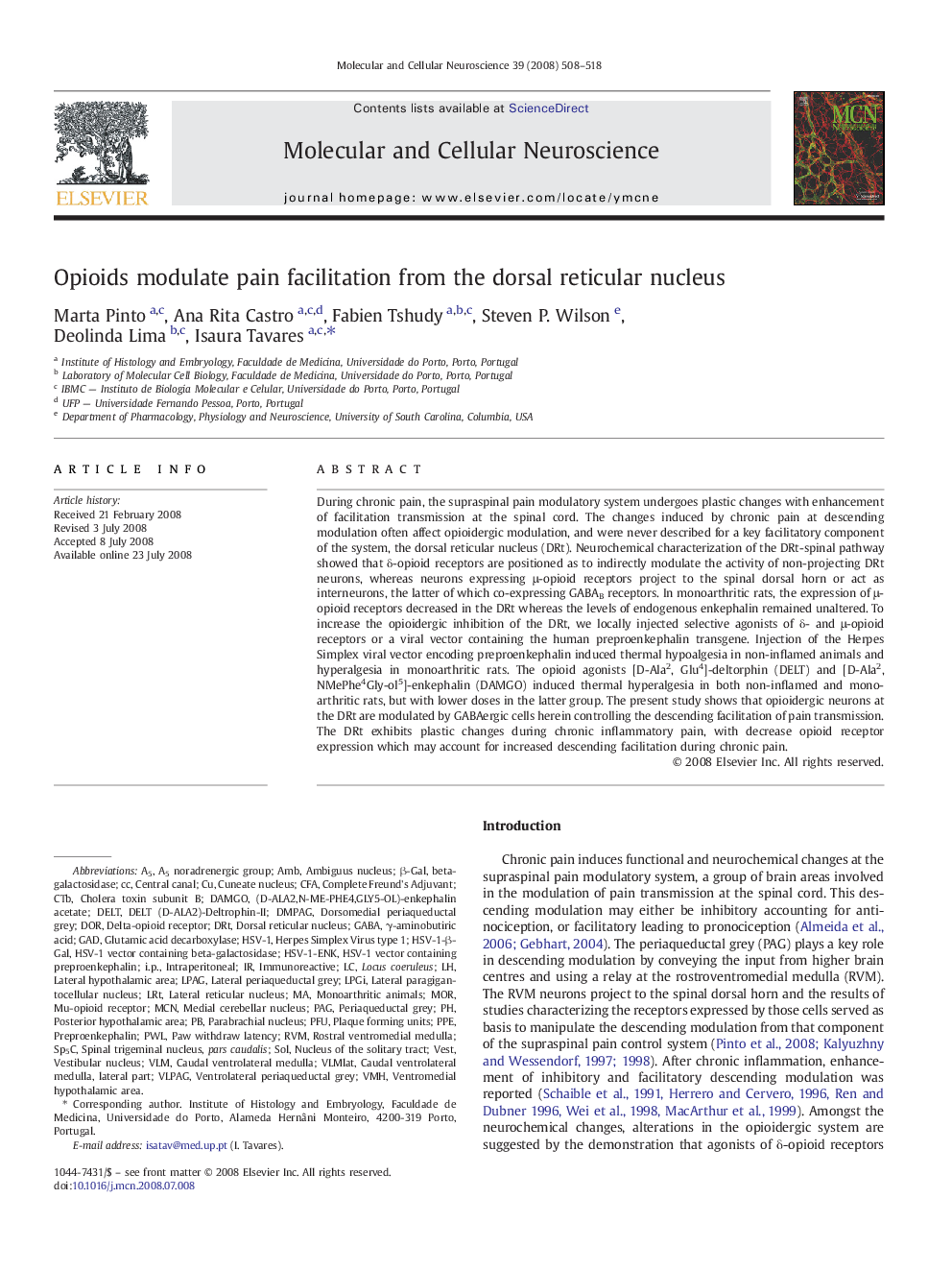| Article ID | Journal | Published Year | Pages | File Type |
|---|---|---|---|---|
| 2199084 | Molecular and Cellular Neuroscience | 2008 | 11 Pages |
During chronic pain, the supraspinal pain modulatory system undergoes plastic changes with enhancement of facilitation transmission at the spinal cord. The changes induced by chronic pain at descending modulation often affect opioidergic modulation, and were never described for a key facilitatory component of the system, the dorsal reticular nucleus (DRt). Neurochemical characterization of the DRt-spinal pathway showed that δ-opioid receptors are positioned as to indirectly modulate the activity of non-projecting DRt neurons, whereas neurons expressing μ-opioid receptors project to the spinal dorsal horn or act as interneurons, the latter of which co-expressing GABAB receptors. In monoarthritic rats, the expression of μ-opioid receptors decreased in the DRt whereas the levels of endogenous enkephalin remained unaltered. To increase the opioidergic inhibition of the DRt, we locally injected selective agonists of δ- and μ-opioid receptors or a viral vector containing the human preproenkephalin transgene. Injection of the Herpes Simplex viral vector encoding preproenkephalin induced thermal hypoalgesia in non-inflamed animals and hyperalgesia in monoarthritic rats. The opioid agonists [D-Ala2, Glu4]-deltorphin (DELT) and [D-Ala2, NMePhe4Gly-ol5]-enkephalin (DAMGO) induced thermal hyperalgesia in both non-inflamed and monoarthritic rats, but with lower doses in the latter group. The present study shows that opioidergic neurons at the DRt are modulated by GABAergic cells herein controlling the descending facilitation of pain transmission. The DRt exhibits plastic changes during chronic inflammatory pain, with decrease opioid receptor expression which may account for increased descending facilitation during chronic pain.
